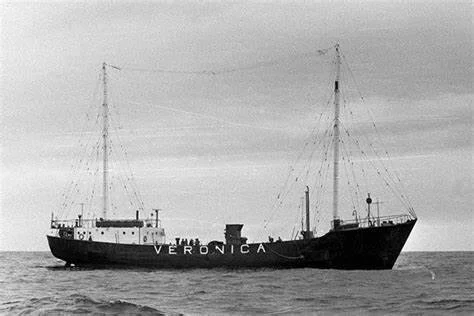In April 1960 a group independent Dutch electronics retailers brought a 1 kW AM offshore pirate radio station on air, broadcasting from the the former lightship Borkum Riff. They intended to boost sales of radio appliances by offering an alternative programme to the official Dutch radio and selling airtime to advertisers. VRON, Vrije Radio Omroep Nederland (Free Radio Station Netherlands) was born, which later became “Radio Veronica” named after the poem "Het Zwarte Schaap Veronica" (The Black Sheep Veronica). After its closure in 1974 some staff members obtained a license and continued operation in the increasingly competitive liberalized market.
The story continued as usual: after the pioneers come the settlers, then the bankers, then the liars, then the lawyers, then the churches, schools and finally at some time the shopping malls - or even worse. For pioneering pirate radio station this journey ended somewhere with TikTok. I imagine, that’s the end of the life cycle. But I have no real insight into TikTok. However, yesterday I looked at YouTube. It must be something like the “Instagram for video content”. Well, on the one hand, I like amateurism. It has a great spirit. But on YouTube you see housewives explaining the universe, fired journalists running “alternative channels”, ex-hedge fund managers explaining geopolitics and its impact on the markets, tattooed ex-bodybuilders being podcast hosts, … you name it. I guess, low technical entry barriers do more harm than good. At least back in the time of Radio Veronica, you needed a ship and a captain’s licence. You needed to build a radio station out of components and modules available. You needed to calibrate the antennas hanging on masts. And last, but not least you needed to power the thing and eat canned food for weeks in a go, together with sea sickness pills in bad weather. Now you just need a smart phone and a ring lamp and can disseminate all garbage globally.
